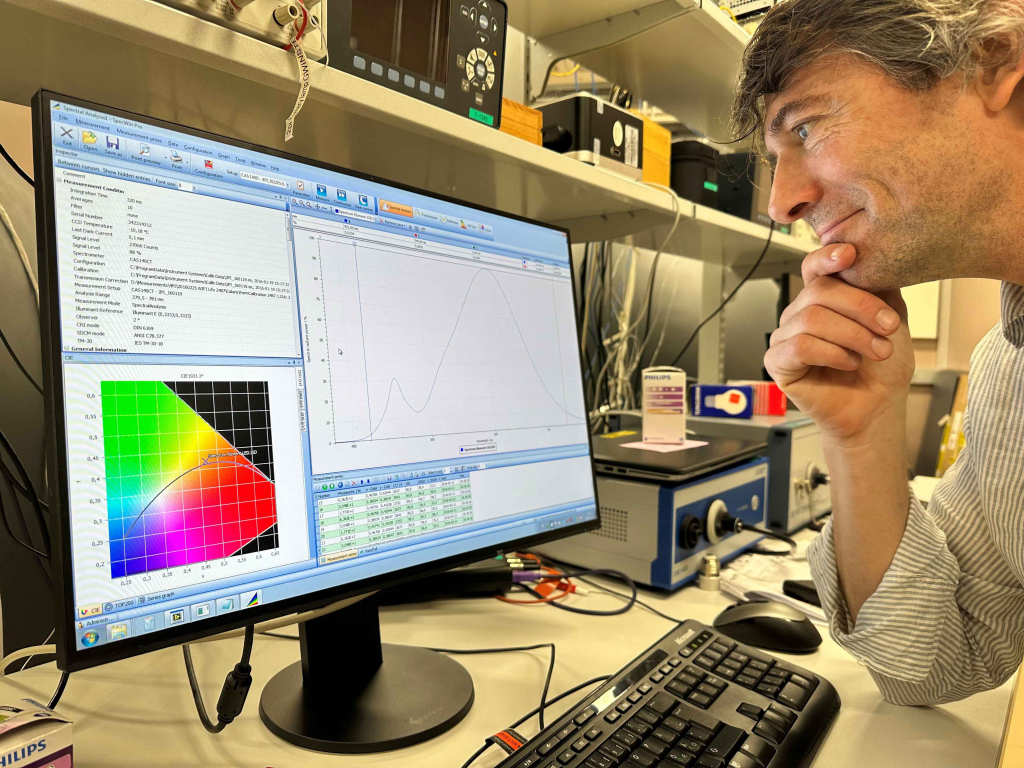-
Home
-
About Elfack
-
Exhibitors
-
Activities
-
Plan your visit
-
For exhibitors
-
Expertise and optimisation for a successful energy transition
 Society is becoming increasingly electrified and digitalised, and in connection with this change we are facing a major energy transition. There is an ongoing development of new methods for optimising energy use, with the Swedish Energy Agency being one of many important actors. Its mission is to lead the transition to a more sustainable energy system. “We will be fossil-free by 2045. The change must be made quickly, and the whole of society must take part in it,” says Peter Bennich, senior adviser at the Swedish Energy Agency.
Society is becoming increasingly electrified and digitalised, and in connection with this change we are facing a major energy transition. There is an ongoing development of new methods for optimising energy use, with the Swedish Energy Agency being one of many important actors. Its mission is to lead the transition to a more sustainable energy system. “We will be fossil-free by 2045. The change must be made quickly, and the whole of society must take part in it,” says Peter Bennich, senior adviser at the Swedish Energy Agency.
The digitalisation and electrification of society requires new approaches and areas of expertise – not least in the labour market. The Swedish Energy Agency is tasked with driving the energy transition at the national level and is working to enable a sustainable energy system.
– The background to the transition is that we will be fossil-free by 2045, says Peter Bennich.
Energy-efficient lighting and optimised electricity consumption
The Swedish Energy Agency provides knowledge, facts and analysis about society’s supply and use of energy. It is currently focusing on three tracks connected with electricity use: the phasing out of fluorescent tubes, the optimisation energy usage, and flexibility of demand.
Phasing out fluorescent tubes means replacing current lighting in schools and workplaces around the country with LED-based alternatives. This will require a large-scale effort over many years, offering many jobs for suppliers, installers, and lighting consultants. The result of the replacement will be lighting that is not only more energy-efficient but also performs better.
– In addition to reducing operating costs, this is also an opportunity to improve lighting, Peter says.
Two tracks that go hand in hand with each other are energy use optimisation and demand flexibility. One example is buildings where it is possible to optimise energy usage by controlling and interconnecting various functions, while improving the indoor environment. You can optimise the energy usage of a building’s lighting, ventilation, and heating systems as they cooperate with each other and adapt to the building’s needs with the help of occupancy sensors and digital control systems.
– More sophisticated systems also use weather forecasts to control heating in a smarter and more efficient way, Peter says.
Smart linkages offer flexible electricity networks
It is possible to implement similar linkages between, for example, a heating system and a ventilation system, batteries and solar cells, and the electricity grid. In this way, electricity use can be controlled to some extent by what is happening in the grid. Such a linkage senses if the grid is coming under strain and helps the property to reduce its electricity use temporarily, or even switch to batteries.
– We can choose to reduce usage at times of the day when the price of electricity is highest, Peter says.
Optimising energy usage in this way not only contributes to lower electricity costs, but also to a place in the so-called flexibility market. Grid flexibility is created by either reducing electricity use or increasing electricity production. In situations where there is a lack of transmission capacity, this enables more efficient use of available electricity networks. As such, the flexibility market offers various players, such as industries and large properties, the opportunity to earn money by adapting their electricity use according to what happens in the grid. The market is still in the development phase but is undergoing tests at the local level, which Peter is positive about. He sees a bright future.
– There are financial incentives to participate in the flex market and in the future, individuals could be paid when they reduce their electricity consumption, he says.
Skills supply is a high priority
The national energy transition involves many changes in the industry, ranging from altered work routines to completely new types of work, which will require new types of installer across the country. In order to ensure that the right skills are available for the transition, the Swedish Energy Agency is supporting various initiatives in skills supply, one of which is the certification of installers.
– There are different types of training programmes, such as the installation of photovoltaic systems, which in the long run should act as a guarantee for the consumer, Peter says.
– Installers play a very important role in the transition. The Swedish Energy Agency provides information about what needs to be done, but it is the people out there who do all the work, so it is also important that they have the right expertise, he concludes.
The Swedish Energy Agency will take part in Elfack, 9-12 May 2023 in Gothenburg. They have a dedicated area on the exhibition floor, where they will give talks about the energy transition and the challenges and opportunities we face.